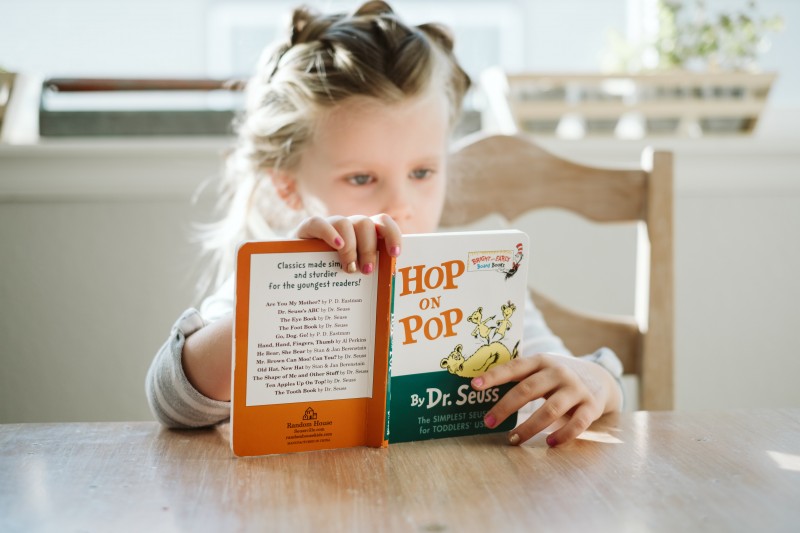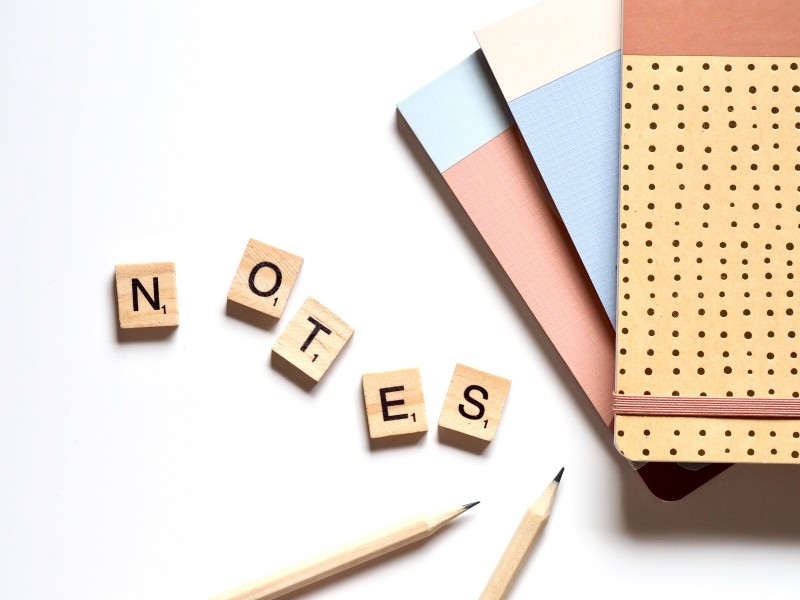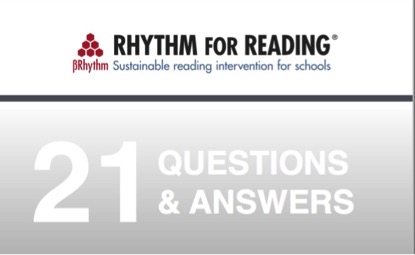The Rhythm for Reading blog
All posts tagged 'SEN'
Sensitivity to rhythm is all around us
14 November 2022A few weeks ago, in an inset session at a wonderful school with beautiful inclusive approaches in their group teaching, I mentioned that rats have the same limbic structures as humans. The limbic system is the part of the brain that deals with our mammalian instincts. These keep us in tune with social information, such as social status and hierarchy, protecting and nurturing our children, bonding with sexual partners and managing affiliation. It’s a logical assumption that if we share these limbic structures, rats like humans should be able to keep time with a musical beat - or their equivalent of that. So, it was no surprise to learn that Japanese researchers have shown that rats can indeed bob along and keep time with a musical beat.
It was back in the 1980s, when American scientists first discovered the genes that determined the rhythm of the mating song of fruit flies. If we think of rhythm as a musical trait exclusive to humans, these findings in rats and flies are simply amusing, novel or entertaining. On the other hand, the bigger picture behind these findings would suggest that the natural world is inherently structured by environmental and behavioural patterns organised by rhythm. If we think of rhythm as a system of ratios, proportions and repetition, then the math of rhythm is obvious. There are cycles and rhythmic flows in tides and weather systems and indeed, migration patterns follow these cycles. In individual organisms, as well as in shoal, pod, flock and herd movement, rhythmic patterns underpin locomotion and communication. Even a human infant’s stepping reflex is organised around the inherent rhythmic systems that we share with many other species.
We humans are particularly happy when our stylised rhythms achieve a hypnotic effect, for example in Queen’s ‘We will rock you,’ - one of the songs used by the Japanese scientists to detect the sensitivity to rhythm in rats. Halfway through the Rhythm for Reading programme, this same rhythmic pattern appears and is always greeted with enthusiasm by teachers and children as a fun part of the reading intervention. Look out for the next post, which explains the connection between hypnotic rhythm, flow states, reading fluency and reading comprehension.

When Rhythm & Phonics Collide
7 November 2022
Have you ever taught a child with weak phonological awareness? The differences between sounds are poorly defined and individually sounds are swapped around. A lack of phonological discrimination could be explained by conflation. Conflation, according to the OED is the merging of two or more sets of information, texts, sets of ideas etc into one.
One of the most fascinating aspects of conflation is that it can happen at different levels of conscious awareness. So, for example teenagers learning facts about physics might conflate words such as conduction and convection. After all, these terms look similar on the page and are both types of energy transfer.
Younger children might conflate colours such as black and brown as both begin with the same phoneme and are dark colours. The rapid colour naming test in the Comprehensive Test of Phonological Processing reveals such conflation. For instance, a child I assessed once as part of a reading intervention conflated brown and green. Any brown or green square in the assessment was named ‘grouwn’ (it rhymed with brown). She had conflated the consonant blends of ‘br’ and ‘gr’ and invented a name for both colours.
In the early stages of reading, conflation can underpin confusion between consonant digraphs such as ‘ch’ and ‘sh’. Another typical conflation is ‘th’, and ‘ph’ (and ‘f’). In all of these examples, the sounds are similar and they differ only on their onset - the very beginning of the sound.
A child with sensitivity to rhythm is attuned to the onsets of the smallest sounds of language. In terms of rhythmic precision, the front edge of the sound is also the point at which the rhythmic boundary occurs. Children with a well-developed sensitivity to rhythm are also attuned to phonemes and are less likely to conflate the sounds. Logically, cultivating sensitivity to rhythm would help children to detect the onsets of phonemes at the early stages of reading. Stay tuned for Part 2 and a free infographic..
Fluency, Phonics and Musical Notes
26 September 2022
The phonics wars raged back in the days leading up to the publication of the 2006 Rose Review. The value of synthetic versus analytical phonics was one of the key educational debates of the decade. At that time, the fragile readers that I was working with as part of my PhD, struggled to decode a simple C-V-C word (consonant-vowel-consonant) such as ‘cat’. I was glad that, following the publication of the Rose review all children would be taught systematically to recognise letter-to-sound correspondence, as well as being explicitly taught to recognise the smallest sounds of language. It was unacceptable to me at that time that the phonemes of simple three letter word such as ‘c-a-t’ were a new discovery for vulnerable children at nine years of age.
Below the radar of the mainstream media, music educators were digging deeply into their own entrenched positions around the teaching of musical notation. Unfortunately, these ideologies and their false narratives have limited access to the development of important musical skills and musical knowledge. Decoding musical notes (like any other form of reading) opens up access to participation in a multicultural global community. In the case of music, this community consists of performers, listeners, arrangers, publishers and composers, who engage across ever-expanding musical genres, including sound tracks for video games, film and television. Music educators’ ideologies have limited access to creative opportunities for too long.
Most children start school with thousands of words and hundreds of melodies in their heads. Yet, in schools and music studios, one of the most limiting and perhaps most misunderstood ideologies stemming from high profile music educators, is that of ‘sound before symbol’. Music teachers have been told for decades that best practice involves singing and naming the shapes of tunes using doh, re, mi. Only when the tune has been learned ‘by ear’, are the visual symbols introduced. The idea that a sound must be taught before introducing a symbol to represent it, has a certain logic, but sound does not need to be taught in this way because sound is processed incredibly rapidly in the auditory system and was the first of our sensory processing systems to reach full maturity in utero.
Ofsted’s July 2022 publication supports moving away from the principle of sound before symbol and recommends a stronger commitment to the teaching of musical notation as a part of a broad and balanced curriculum. In the teaching of reading, automated phoneme-to-grapheme correspondence is the key to the rapid development of fluency. Indeed this usually involves presenting the sound with the symbol using rapid response multi-sensory teaching methods. In the Rhythm for Reading programme, we teach sound with symbol correspondence using a rapid response multi-sensory approach to musical notation and therefore prioritise fluency as the overriding goal.
Get in touch by visiting the contacts page if you would like to boost reading fluency in a ten-week period and gain the additional benefit of teaching every child to read musical notation fluently in the very first session of the programme.
Progressive action in schools
25 June 2017
The recent tragic events in London and Manchester have been deeply painful and have also been a sharp reminder of the importance of taking progressive action in education. In 2012, I embarked on an entrepreneurial journey because I wanted the benefits of rhythm-based learning to be available in classrooms everywhere, as well as to ensure that certain educational advantages that are available to the privileged who can afford high quality instrumental music tuition would be, in a condensed and concentrated format, available to all. We hear frequently about the importance of reading for the development of empathy, and in 2014, I decided to create a project which would combine the theme of empathy with rhythm-based activities, which enhance social cohesion, reading fluency, reading comprehension and engagement. With the help and support of the senior leadership teams of two neighbouring, but very different schools, Alleyn’s, an independent school, and Goodrich Community Primary School, we have established a bond based on empathy, cooperation, rhythm and reading.
The project has completed eight cycles so far. Each week a group of assured and enthusiastic Year12 Alleyn’s students have accompanied me to Goodrich School, where they have mentored wonderfully effervescent pupils in Year 3 and Year 4. Everybody benefits profoundly from taking part: the mentoring students quickly learn to build trust and communication with the younger children, who experience a remarkable transformation in their reading. I am very much looking forward to presenting on this topic on Saturday 1st July at the UKLA 53rd International Conference 2017 ‘Language, literacy and class: Connections and contradictions’ at Strathclyde University, Glasgow.
“What does the science tell us? What does the research say?”
1 June 2016As a necessary part of due diligence, school leaders must ask probing questions before committing to an intervention and research is an important source of information. In previous posts, I’ve highlighted academic work that explores for example, the importance of rhythm in infant language learning (October, 2015), the development of reading skills (March, 2015) and language processing in the auditory brainstem (November 2015).
It’s important to consider the extent to which school leaders can have confidence in the rigour of scholarly work and peer-review. A peer-review panel made up of academics with specialism in a particular field is uniquely qualified to judge that an article is not only relevant to the readership and methodologically sound, but also meets the ethical and academic standards of the publication. Many journals now offer free access to high quality, peer-reviewed content considered to be relevant to a wider readership (e.g. Long, 2014).
Incredibly, more than 5,000 academic papers are published each year in journals on the role of shared or overlapping neural structures known to contribute to linguistic processing and musical processing. Although many people intuitively believe that it may be possible to isolate and identify a ‘single mechanism’ that might explain the overlap between language and music, it is becoming more likely that several interconnected mechanisms or networks may be involved (e.g. Peretz et al., 2015).
When pupils in key stage one, key stage two and key stage three have taken part in the Rhythm for Reading programme, they’ve described benefits to their reading, concentration and attitudes to learning, suggesting that the impact of the programme is fairly broad. Recent research with older pupils in a special school has also demonstrated clear benefits of the programme on reading attainment and other areas of learning behaviour.
Consultation meetings with school leaders have sparked interesting discussions, with particularly popular topics which come up again and again.
1. The structure and content of the Rhythm for Reading programme.
2. The ‘single mechanism’ that might explain how the programme works.
3. The suitability of the intervention for different groups of children, for example pupils identified with EAL or SEND or FSM.
4. Professional development.
5. The development of the Rhythm for Reading programme.
As these are really popular questions, I’ve made a useful free resource for school leaders, please click here to have a read.

References
Marion Long. ‘I can read further and there’s more meaning while I read’: An exploratory study investigating the impact of a rhythm-based music intervention on children’s reading. Research Studies in Music Education (2014): 1321103X14528453.
Peretz, Isabelle, et al. “Neural overlap in processing music and speech.” Philosophical Transactions of the Royal Society of London B: Biological Sciences 370.1664 (2015): 20140090.
“I used to say things quite slow, but now I say them fast”
15 April 2015As educators we are required to make thousands of small but important decisions everyday. Striking the right balance involves blending professional judgement with our integrity and experience. Through reflection perhaps with colleagues, we are constantly learning from our experiences.
I have been thinking hard about special education (SEND) recently. The Rhythm for Reading programme promotes inclusive approaches. Students with learning differences are fully involved alongside their classmates and the programme is accessible even to those who cannot yet read simple words such as ‘cat’. This is what a child said recently to me about the programme: “I liked how we had to keep it in the team at the same time. I felt more surrounded. I had people to keep me upright.” So, when a pupil shows absolutely no desire to contribute to even the most basic of Rhythm for Reading exercises, whilst all around him others are learning rapidly and having fun, my own personal learning journey fires up in a big way.
Each Rhythm for Reading session is only ten minutes long and so every second is precious. Is this child withdrawn, overwhelmed, lacking in confidence, lacking social skills, frightened or generally resistant to new things? What is clear and of concern to me is that he is ignored by the other children and hardly responds to anything I say or do. His teachers are highly protective of him and they can recite a list of issues and medical problems: he is a special child.
I believe that if a child processes and performs tasks more slowly than his classmates, as educators we must help him to develop the strategies that he needs to adapt to different settings. Self-regulation strategies for example, are key for learning road safety skills: learning to judge the speed of traffic, inhibiting the impulse to wander into the road, as well as being able to find a safe place to cross are essential to every child’s survival, no matter how special that child’s needs might be. While road safety lessons are clearly a matter of life and death, it is the quality of life of each child that is determined in the classroom. To teach a special child to cope with a broad range of settings with confidence is a highly worthwhile investment of our time and energy. There are so many benefits of joining in with others in a structured group teaching activity. It is enormous fun and a profound sense of belonging and unity develops through cooperation. Of course, this outcome can only be fully enjoyed by everyone, if everyone has contributed wholeheartedly to the success of the task.
If you have enjoyed this blog, you might also like to learn more about our work on metacognition and self-regulation. If you’d like more information about the programme, contact me direct, or sign up for free weekly ‘Insights’, which launches next week!
Reading for Pleasure
9 November 2014If you have seen our website and thought, “Okay, but what does rhythm have to do with reading?” - here’s a post that explains one aspect of the Rhythm for Reading programme and the way that it helps pupils to read for pleasure. Language, in speech and written form, is all the more evocative and intelligible when its sounds, syntax, style and structure cohere to compelling effect. Reading for pleasure, becoming completely immersed in a book, appears to be effortless because our fluent reading skills generate a self-sustaining momentum. Let’s unpack this.
Every sentence, no matter how simple it appears to be is remarkable in that it is shaped from a seemingly infinite range of possibilities. Sentences vary enormously in their length and complexity, yet they are essentially binary in their structure: consisting of a subject and its predicate. The tension between these grammatical elements plays an important role in generating the self-sustaining momentum of language.
To read a simple passage of printed language without undue effort, a reader needs to be able to negotiate the shape and structure of the sentence in addition to recognising the words. Word recognition skills are necessary for the development of fluent reading, but are not sufficient. Reading for pleasure involves being able to ride the rhythm generated by the grammatical structure of language and being able at the same time, to respond to the shape and pace of each sentence. During Rhythm for Reading intervention sessions, pupils are immersed in a series of reading tasks that are enriched by musical shapes, styles and structures. As a form of group teaching, this approach offers a unique opportunity to develop the dynamic processes that contribute to reading for pleasure without front-loading pupils with decoding, vocabulary and word recognition.
